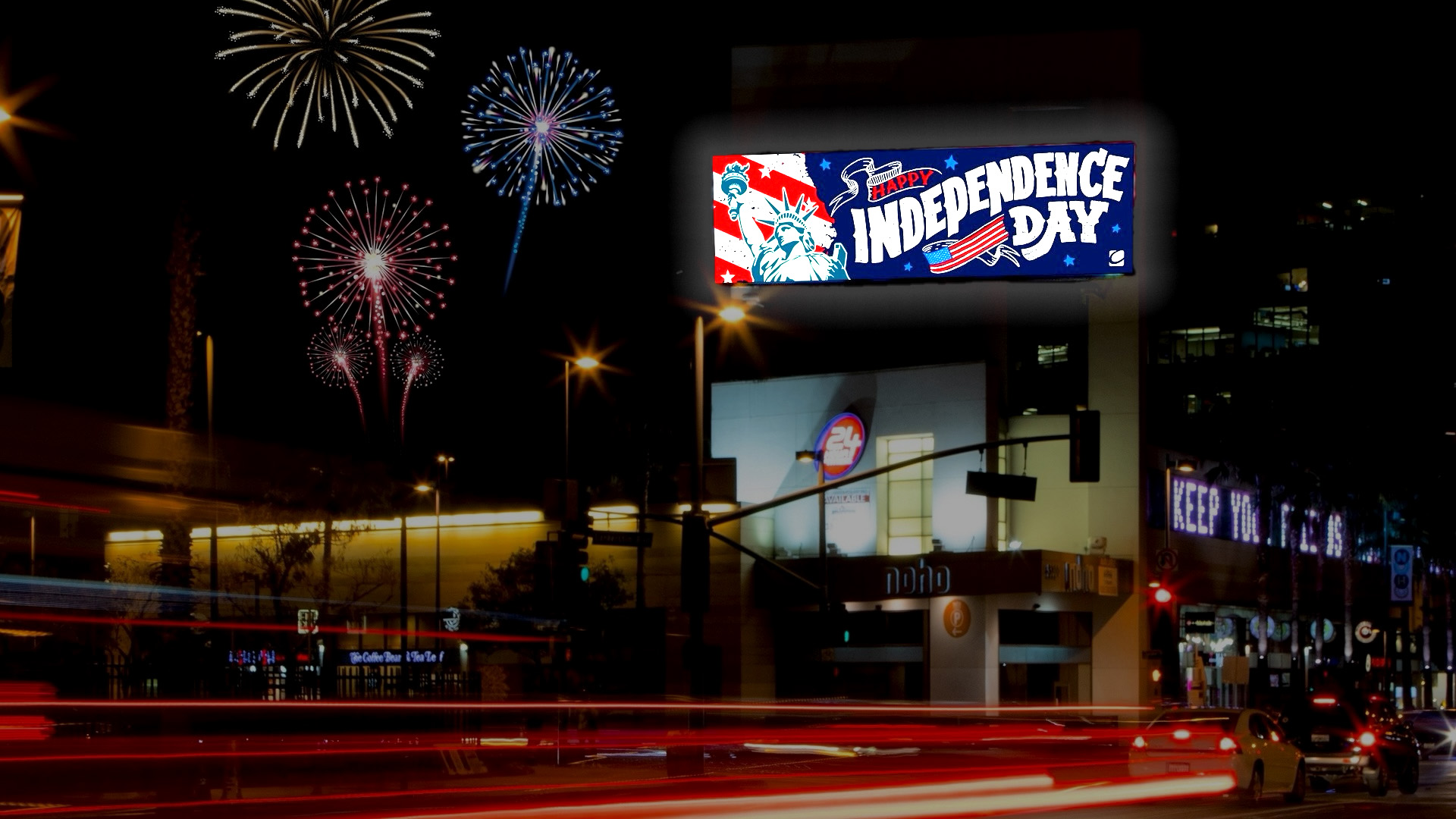

We’ve all been there—you’re driving along the highway, minding your own business, when your corneas are seemingly struck by the full force of the Death Star’s planet-destroying laser. You recoil, throwing your hand up to shield your eyes, your skin sloughing off like sawdust from under a belt sander. Through the glow of your skin, you can identify your assailant: an LED billboard advertising 30 percent off mattresses. Happy Labor Day to you and your medium-well optical nerve.
You might be surprised to hear it, but the ordeal you and your fellow Americans have been through isn’t actually legal. According to Cornell Law School, Title 23 of the Electronic Code of Federal Regulations prohibits illuminated roadside signs that “are of such intensity or brilliance as to cause glare or to impair the vision of the driver of any motor vehicle.” Flashing signs like we’ve all seen are also illegal, and their brightness has to change with lighting conditions according to the Out of Home Advertising Association of America. The law also says that state highway departments have to be involved in the construction of any such illuminated signs, so in theory, these shouldn’t exist.
So what gives?

It may as well be ancient history now, but in 2007, the Federal Highway Administration issued an updated guidance on digital billboards. They were no longer restricted by the Highway Beautification Act of 1965, and have become a common sight along our roads since. Bans on digital billboards sprang up in response, though as a 2013 USA Today story notes, they’ve widely been struck down by courts at the behest of the advertising industry. Too bright? Too distracting? Advertising execs don’t care. In fact, they’re delighted to know that traffic jams are their captive audiences.
“Our audience grows every single day,” said Paul Meyer, chief executive of Texas-based Clear Channel Outdoor, to The Washington Post in 2007. “How many more cars are on the road today compared to 10 years ago? I remember years and years ago driving to the airport, rush hour was a problem. Now, you can barely get on that expressway—it’s a bumper-to-bumper pace. What does that do? That greatly enhances the value of all our signage along the Kennedy.”
So what can any of us do? Well, the law still limits how bright a sign can be, so we can all recall seeing lawbreakers along the roadside. They can be reported to the relevant authority, which in some states is the highway department. Include photo evidence where possible, obviously. Whether reports turn into enforcement is another matter—at least officially. I can’t legally condone taking matters into your own hands, but the word “birdshot” has passed my lips more than once. Just in general, nothing to do with signs. In Minecraft. Which reminds me, I need to get some target practice that’s not on Amazon delivery drones.
Got a tip or question for the author? You can reach them here: james@thedrive.com